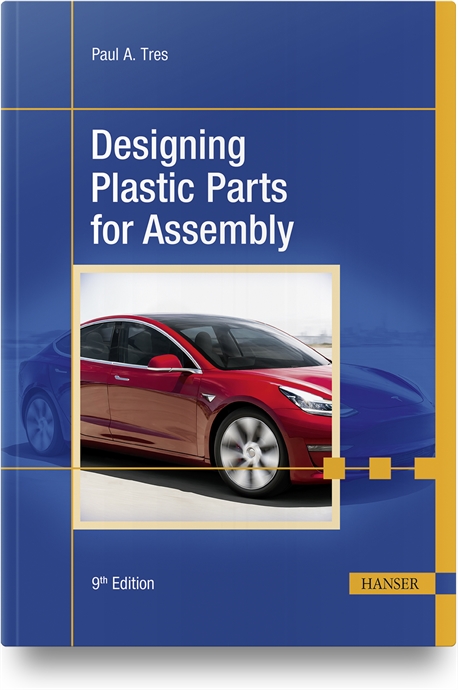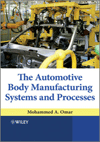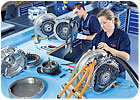
After years of hype, things are starting to heat up in the electric vehicle market. At last month’s Paris Auto Show, Audi, Honda, Jaguar, Kia, Nissan and Renault unveiled a diverse lineup of electric vehicles. This month, the much-anticipated Chevy Volt hits the streets, while the Nissan Leaf will be available in December. And, not to be outdone, Ford Motor Co. plans to bring five new electrified vehicles to market over the next two years.
In addition to traditional automakers, numerous start-ups, such as Tesla Motors Inc., are developing electric vehicle (EV) technology. Truck makers are also getting into the EV game with medium-duty commercial vehicles designed for urban applications, such as package delivery. For instance, Navistar is ramping up production of its all-electric eStar truck, which features a 70-kilowatt electric motor and an 80-kilowatt-hour lithium-ion battery pack.
Most attention has been focused on the size, weight, reliability and performance of lithium-ion batteries. However, EVs depend on a lot more than just batteries to make them go.
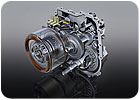
Dynamic Market
Automakers and suppliers are scrambling to produce key electromechanical components, such as electric motors, axles, controllers, drivetrains, steering systems, power electronics and climate-control systems. That creates many new opportunities and challenges for traditional Tier 1 manufacturers such as BorgWarner, Robert Bosch, Continental, Dana, Delphi, Eaton, GKN, Lear, Magna, Siemens, Valeo and ZF.There are many different types of EV scenarios, including hybrids, plug-ins and fully electric vehicles. Mild and full hybrids, such as the 2010 Ford Fusion, combine a traditional internal combustion engine (ICE) power train with supplementary electric motors to run the car at idle and low speeds. Plug-in hybrids and range-extended electric vehicles, such as the Volt, combine electric motors with a supplementary ICE to run the motors after the batteries have been depleted. Fully electric vehicles, such as the Leaf, can only be recharged by plugging into the power grid.
A recent study conducted by The Boston Consulting Group Inc. (BCG) projects steady growth for electric cars during the next decade. Under the most likely scenario of the industry’s evolution, BCG estimates that 26 percent of the new cars sold a decade from now in the major developed markets will feature electric or hybrid power trains. Of the roughly 14 million electric cars forecast to be sold in 2020 in China, Japan, the United States and Western Europe, BCG projects that some 1.5 million will be fully electric, 1.5 million will be range extenders, and 11 million will be a mix of hybrids.
“Automakers are on the verge of mass-marketing electric vehicles worldwide, including both plug-in hybrid electric vehicles (PHEVs) and battery electric vehicles (BEVs),” says Dave Hurst, a senior analyst at Pike Research. “These vehicles offer improved fuel economy, lower emission, and a quieter ride than ICE vehicles, with several key variations in driving range capabilities.
According to Hurst, worldwide adoption of PHEVs and BEVs will grow quickly over the next five years, with sales totaling 3.2 million vehicles between 2010 and 2015 at a compound annual growth rate of 106 percent.
“PHEVs and BEVs will complement, rather than displace, the market for conventional hybrid electric vehicles,” Hurst points out. “Electric vehicles will follow the lead of hybrids and will be launched in the small car segment for consumer markets initially, with the small SUV segment close behind. Because of their low weight and good aerodynamics, smaller vehicles are far more efficient to better extend the electrically powered driving range, and [this segment will] allow the use of a smaller, less expensive battery.”
Most experts claim the electrification trend is not a short-term fad. In fact, if the predictions are accurate, 75 percent of light-duty vehicle miles traveled in the United States in 2040 will be in electric-powered cars and trucks. Most of that activity will occur in and around congested urban areas.
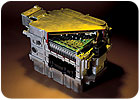
Diverse Components
As electric vehicles become more popular, some traditional automotive components will become less important, while others will need to be redesigned.For example, many of the subsystems in traditional ICE power trains, such as water pumps and power steering pumps, are belt driven. However, EVs don’t rely on belt-driven components. For instance, an electric power steering (EPS) system eliminates the need for pumps and hoses. It only uses energy when the driver steers, improving efficiency and reducing emissions.
“All hybrid and electric vehicles require EPS systems for steering operation in electric mode,” says Ted Seeger, global chief engineer for electric steering at Nexteer Automotive. “The push toward increasing fuel economy and reducing emissions is driving vehicle electrification on a global level and EPS is one of the key technologies helping automakers meet the new requirements. Electric power steering will be standard on more than half of the world’s vehicles by 2020.”
According to the U.S. Department of Energy’s Office of Energy Efficiency and Renewable Energy (EERE), the replacement of belt-driven systems with electrically driven components has been responsible for numerous cost overruns in the EV industry. It estimates that the cost of components must be reduced by 80 percent and the power increased by 50 percent.
“The EV power train is less complex than an internal combustion power train,” notes Nam Thai-Tang, vice president of programs at ALTe LLC, a startup firm that recently opened a new factory in Auburn Hills, MI. “The amount of electrical, mechanical, chemical and thermal dynamic controls required to efficiently operate an internal combustion engine is more demanding than those required to operate an electric machine.”
An electric power train is mechanically simpler than an ICE power train, because the only moving parts are the motor-generator and the reduction gear set. Electric drive components require virtually no maintenance, such as the periodic oil and filter changes associated with ICEs. An EV power train uses a gearbox with an integrated electric motor to create propulsion. The gearbox itself is simpler than traditional drivetrains.
However, some EV designs can be more complex. “A range-extended electric power train, such as the ALTe system, combines the traditional ICE with the electric drive, and therefore increases complexity of a standalone electric system,” Thai-Tang points out.
For instance, a 111-kilowatt electric drive unit powers the Volt’s wheels at all times. “Positioned under the hood next to the engine, it packages a pair of electric motors and a multimode transaxle with continuously variable capability,” says Micky Bly, GM’s executive director of global electrical systems.
“Unlike a conventional power train, there are no step gears within the unit, and no direct mechanical linkage from the engine, through the drive unit to the wheels,” explains Bly. “The propulsion system optimizer evaluates the best efficiency point hundreds of times per second, and seamlessly switches from one-motor to two-motor operation to use as little energy as possible.”
“After the battery, the power system-motor, inverter (controller) and charger-is the most important system in an electric vehicle,” notes Tom Gage, CEO of AC Propulsion Inc. “It determines performance, charging speed, efficiency and customer appeal.
“Like the engine in a conventional vehicle, the power system provides both the functionality and the desirability that makes a car a seller,” Gage points out. “It is more complex than a typical electric motor system because of the broad range of speed and power required, the operating environment, durability, safety and controllability requirements, and the need to monitor and control the battery during charge and discharge.
“For automotive applications, the challenge is always cost reduction with extremely high quality,” says Gage. “Unlike most consumer electronics, the propulsion system is an energy device as well as an information device, so thermal, EMI and mechanical aspects are very significant.”
High-torque electric motors form another critical piece of the EV puzzle. Electric vehicles typically use three-phase motors that range from 5 to 120 kilowatts.
“The inverter and electric motor are the most important components used in electric vehicles outside the battery,” claims Sherif Marakby, director of electrification programs and engineering at Ford. “Electric motors in EVs, plug-ins and hybrids are much more complex than motors used for starters or other automotive applications.
“They require significant precision, design know-how and optimization to ensure high efficiency, best range and fuel economy,” adds Marakby. “EV motors also are different from the perspective that they don’t use oil and you won’t see spark plugs either. Electric motors will certainly be different than what you normally would see with a regular gasoline motor.”
According to the U.S. Department of Energy, there’s a big need to develop new methods of producing permanent magnets used in electric motors. Magnets represent a significant portion of motor cost-sintered magnets used in interior permanent magnet motors represent approximately one-third of the cost. Improved production processes could significantly reduce the cost of motors and the energy required to create them.
Another alternative is to use motors that don’t depend on magnets, such as synchronous machines. Permanent magnet synchronous machines, which use rotors equipped with magnets, currently dominate the EV market.
“Technical challenges associated with this type of motor include achieving zero torque lose, as well as availability and cost of the magnet raw material,” says Jorg Grotendorst, head of the hybrid and electric vehicles business unit at Continental AG. “These challenges do not arise with SM motors, which offer a high degree of efficiency across virtually the entire operating range. In particular, they offer advantages at higher speeds.” The SM motor developed by Continental will go into series production next year, when a major European automaker launches a range of electric vehicles.
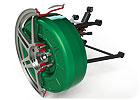
It's a New Generation
To meet growing demand for EVs, engineers are developing a new generation of products. There’s a big need for smaller, lighter, more robust and less expensive components that can meet the demanding high-temperature requirement of in-vehicle applications.
“The objective is to reduce the weight and installation space of these components and increase their efficiency . . . to achieve as great a range as possible on the basis of the battery capacity available,” says Matthias Kusell, who heads up engineering projects for EV and hybrid systems at Bosch. With some creative packaging, Bosch engineers recently created a power electronic module that is 33 percent smaller than previous units. It will be used in 2011 Porsche and Volkswagen hybrids.
With its new generation of power electronics, Continental has reduced the size of its electric motors by 30 percent. “This has been achieved by making components smaller, using new manufacturing and production processes, and by an overall improvement in efficiency,” claims Grotendorst.
In addition to motors and drivetrains, EVs also require a wide variety of on-board charging systems and external charging systems. Several Tier 1 suppliers, such as Delphi and Lear, have jumped at the opportunity to manufacture these systems. More than 50 percent of the patents that Lear, a traditional manufacturer of seats and interior components, filed in 2009 were for EV-related technology.
Cooling systems are another important component that engineers must rethink. Thermal control is a key factor in extending the range of EVs, because batteries, motors, DC-DC converters and other components need stable temperatures to work efficiently.
For example, the Tesla Roadster uses a heat transfer system developed by Dana, a traditional supplier of driveshafts. It cools the vehicle’s battery by transferring heat generated within the battery to the vehicle’s climate-control system. A temperature sensor mount provides continuous feedback to the climate-control system. Dana engineers constructed the heat exchanger using a patented aluminum brazing process.
“The interface helps maintain the battery’s ideal temperature during operation,” says Ted Zielinski, director of engineering at Dana Thermal Products Group. “The use of high-strength aluminum provides greater material strength and contributes to weight savings. Additionally, the chiller’s compact design provides significant space savings-critical for helping engineers accommodate the Roadster’s 6,800-cell battery pack.”
But, the best battery in the world is useless if it can’t communicate to motors, brakes, steering and other critical vehicle systems. “The power electronics devices that sit between the batteries and drive motors are the most vital component of an EV or hybrid vehicle,” claims Carl Bonfiglio, senior segment marketing manager at Infineon Technologies North America. “These components typically include a power module, gate drivers and a microcontroller.
The inverter, which takes DC battery energy and converts it to AC to drive an electric motor (and the reverse in regenerative systems) is the principal system for EV power electronics. Bonfiglio says automakers aim for the highest possible efficiency in the inverter stage. “Up to half of the value of a typical inverter is attributed to the power module,” he points out.
“The power module comprises IGBTs (insulated gate bipolar transistors), diodes, connectors and packaging technology that protects the electronics and provides for cooling,” adds Bonfiglio. “Packaging is critical, as operating temperatures readily surpass 125 C. Higher performing modules now in development will operate at temperatures up to 200 C.
“Reaching the next level of operating temperature will require copper wire bonds between the IGBTs and the module package,” warns Bonfiglio. “To bond to copper, the IGBT itself requires a copper bond pad surface.”
Earlier this year, Infineon unveiled new interconnection technology that’s suitable for high-volume production. It involves bond wiring on the chip front side, soldering on the chip back side and direct copper bond to base plate soldering. A
To learn more about electric vehicle manufacturing trends, click www.assemblymag.com and look for these articles:
- Assemble EV Components In-House or Outsource?
- Battery Manufacturing-Build It in the USA
- Battery Standards Will Accelerate Growth
- Electric Vehicle Assembly
- Inside GM’s New Battery Plant
- In-Wheel Motors May Revolutionize the Auto Industry
- It’s a Great Time to Be a Battery Engineer
- New Players Reach for the Sky
- Standards Will Drive Down EV Cost
- The Hybrid Challenge
- The Race to Automate
- The Road to Green



